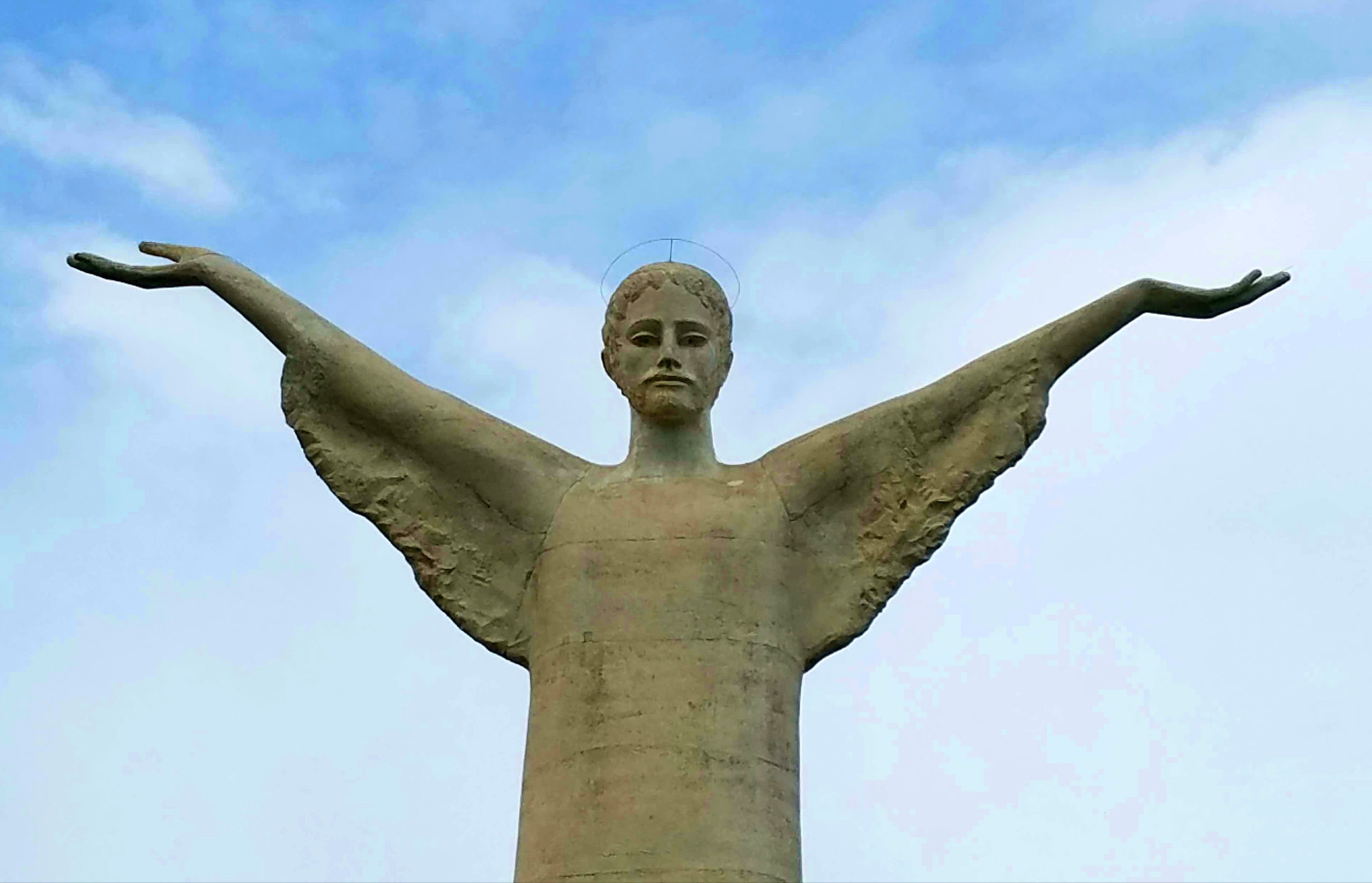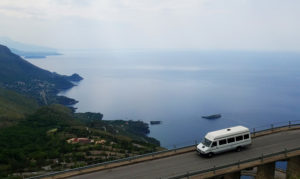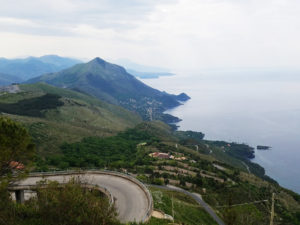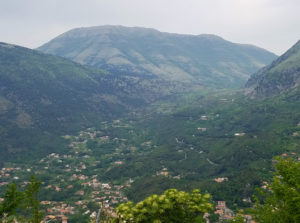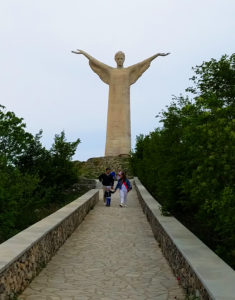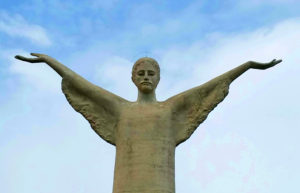
The Christ the Redeemer statue of Maratea in Basilicata is made out of Carrara marble and stands an incredible 70 feet high (21 m), and has an enormous arm span of 63 feet equaling (19 m). The statue is located high up on a mountain and situated in front of the Santuario di San Biagio, whose relics have been preserved in Basilica since 732 A.D. The entire experience is incredible and the panoramic views are absolutely breathtaking! This masterpiece is the tallest statue in Italy and the third largest Christ statue in Europe. The first being Christ the King in Świebodzin, Poland, and the second would be Christo Rei in Portugal. Another interesting fact about the Christ the Redeemer Statue of Maratea is that it shares the same name with its more popular cousin Christ the Redeemer of Rio de Janeiro, Brazil.
It is a long and adventurous winding road that leads up to the statue. Many tourists make the trek a form of religious pilgrimage. As you begin to head up out in the distance the direction of the majestic statue remains unclear. Many onlookers presume it’s facing the sea. However, as you approach closer and closer it looks as though it faces the Mountains of Basilicata. Interestingly enough it’s the history and the craftsmanship that makes the statue a top tourist attraction.
History of Christ the Redeemer Statue of Maratea
The Christ the Redeemer statue of Maratea stands on the same spot as a war memorial created in 1907. An iron-wrought cross commemorated the lives lost during the invasion of Naples in 1806. Due to its position, the cross was repeatedly struck by lightning and thunderstorms. The continuous weather damage led to multiple repairs.
In 1942 the Podesta (or chief magistrate) and later mayor, Biagio Vitolo, proposed a weatherproof cross made with cement and lightning conductors to replace the iron cross. The construction took place along with the making of the winding asphalt road that helped direct trekkers towards the lovely remembrance location.
Building the Statue (1963-1965)
In 1963, Count Stefano Rivetti di Valcervo commissioned the construction of Christ the Redeemer of Maratea. The notion came after his visit to Brazil. Amazed by the grandeur and beauty of the statue of Christ the Redeemer in Rio de Janeiro, Brazil, he decided to build a similar sculpture in his homeland. He appointed a Florentine sculptor. Bruno Innocenti (1906-1986) for this project. Unlike the artists of his time, Innocenti was a realist. Instead of immersing his work in the avant-garde movement, he opted for realistic representations. His renderings were delicate and soft. The idea was to complement the surrounding natural beauty with a statue much like the one in Rio de Janeiro.
Therefore, the difference between the Statue of Christ the Redeemer of Maratea and its counterpart in Brazil is unsurprising. Innocenti’s realization is younger and more joyful. The figure’s arms are raised at an almost 45-degree angle, with palms facing upwards. The bottom of its robe is set slightly ahead of the other on one side. These details create the impression of a figure moving forward. The sculpture was unveiled as The Statue of Christ the Redeemer in 1965.
When Innocenti was working on the project, he called it Il Cristo risorgente—Christ Rising, a nod to the Resurrection. Knowing this, the distinctive details in his work align with the image of that moment.
Symbolism in Christianity & Aesthetical Elements
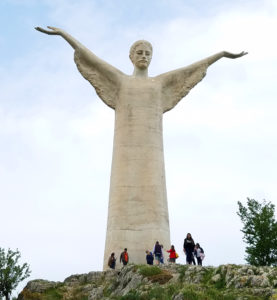
Christ the Redeemer first and foremost, establishes Maratea as a Christian city. The statue evokes an angelic-like presence, both beautiful and powerful at the same time. The outstretched arms symbolize the holy trinity. The face of Christ differs from its predecessors and traditional icons of the holy figure. Bruno Innocenti sculpted a younger figure with a short beard and short hair. However, these alterations do not undermine the value of this exquisite landmark. Like most signs of a cross, it represents the crucifixion and the great sacrifice of our Lord and Savior, Jesus Christ. It captures the essence of unconditional love, faith, strength, and reminds us of the true love the omnipresent deity has for his followers.
The overall proportions of the statue are well-balanced and aesthetically pleasing. The sculptor chose clear lines and a light white color for this purpose. The white hues symbolize purity and piousness. You can notice the light reflecting from the sunlight and moonlight, creating a celestial effect. All this makes seeing this magnificent religious work of art a bucket list trip for many.
Top Tourist Attraction in Italy
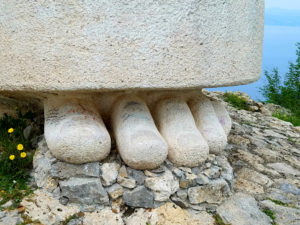
The Statue of Christ the Redeemer of Maratea is one of the top attractions in Italy for numerous reasons. It ties the region to its history and commemorates the honorable service of soldiers who sacrificed their lives during the French invasion. More importantly, it serves as a reflection of all that is good and pure in the world and as a sacred symbol of Christianity. Additionally, the magnificent sculpture appears to stand guard and protect the surrounding area and acts as a remembrance to those who have their feet planted firmly in the Christian faith.
Would you like to visit the UNESCO World Heritage town of Maratea and also see this spectacular Christ the Redeemer Statue? Stay tuned to our website and Facebook page. We will be offering such a trip in the near future and we hope to take you.

